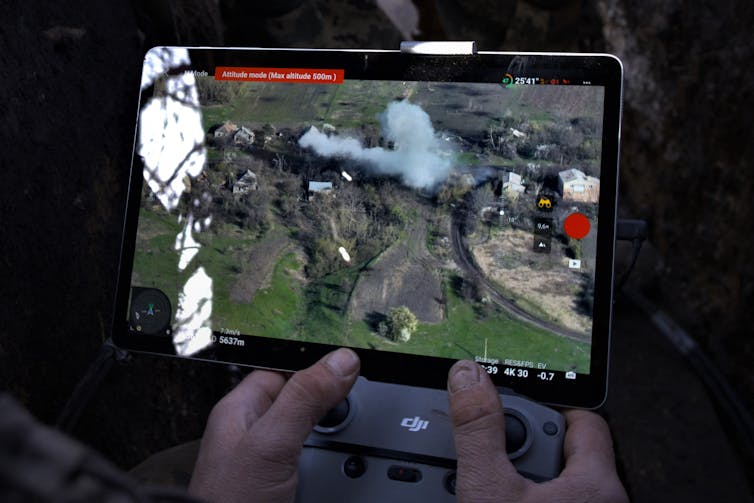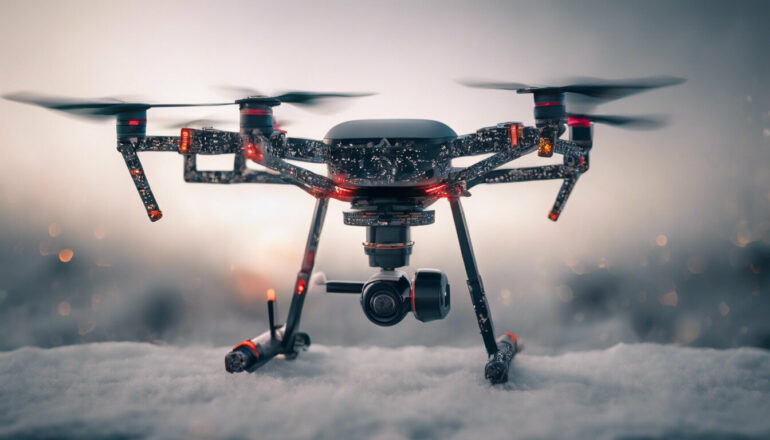Unmanned aerial vehicles, or drones, have been central to the war in Ukraine. Some analysts claim that drones have reshaped war, yielding not just tactical-level effects, but shaping operational and strategic outcomes as well.
It’s important to distinguish between these different levels of war. The tactical level of war refers to battlefield actions, such as patrols or raids. The operational level of war characterizes a military’s synchronization of tactical actions to achieve broader military objectives, such as destroying components of an adversary’s army. The strategic level of war relates to the way these military objectives combine to secure political aims, especially ending a war.
In the war in Ukraine, what have drones accomplished at these three levels?
Mounting evidence, including my own research as a military scholar who studies drone warfare, suggests that drones have delivered some tactical and operational successes for both Ukraine and Russia. Yet they are strategically ineffective. Despite its increasing use of drones, Ukraine has not dislodged Russia from the Donbas region, and Russia has not broken Ukraine’s will to resist.
Drone warfare in Ukraine
The drone war in Ukraine is evolving in ways that differ from how other countries, especially the United States, use UAVs.
First, the U.S. uses drones globally, and often in conflict zones that are not recognized by the United Nations or do not have U.S. troops on the ground. Unlike this pattern of “over-the-horizon” strikes, Ukraine and Russia use drones during an internationally recognized conflict that is bounded by their borders.
Second, the U.S. operates armed and networked drones, such as the Reaper, the world’s most advanced drone. Ukraine and Russia have adopted a broader scope of low- and mid-tier drones.
Ukraine’s “army of drones” consists of cheaper and easily weaponized drones, such as the Chinese-manufactured DJI. Ukraine has also operated Turkish-manufactured TB-2 Bayraktar drones – the “Toyota Corolla” of drones. U.K.-based defense and security think tank Royal United Services Institute estimated that Ukraine loses 10,000 drones monthly and within a year will have more drones than soldiers, implying it will acquire over 2 million drones. To manage these capabilities, Ukraine recently established a new branch of the armed forces: the Unmanned Systems Forces.

A Ukrainian serviceman of the Adam tactical group operates a drone to spot Russian positions near the city of Bakhmut, Donetsk region, on April 16, 2023.
Sergey Shestak/AFP via Getty Images
Russia has responded by importing Iranian-manufactured Shahed-136 attack drones. It has also expanded the domestic production of drones, such as the Orion-10, used for surveillance, and the Lancet, used for attacks. Russia intends by 2025 to manufacture at least 6,000 drones modeled after the Shahed-136 at a new factory that spans 14 football…



